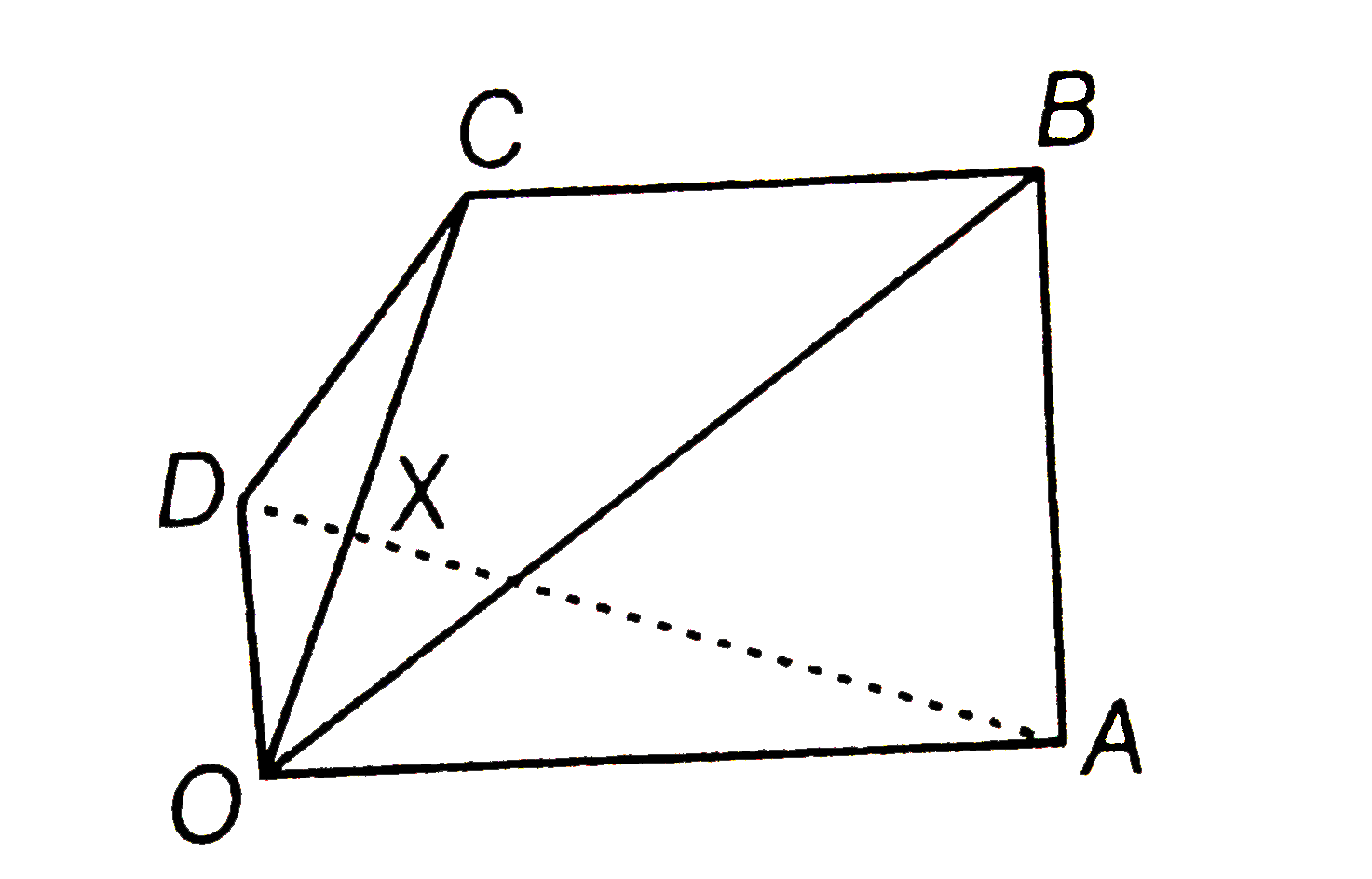Complete Solutions to Exercise (Passage Based Questions) of chapter VECTOR ALGEBRA of Class 12 book with complete answers and questions
| Class 12 | MATHS |
| Chapter | VECTOR ALGEBRA |
| ARIHANT MATHS | Exercise (Passage Based Questions) |
| Number Of Questions | 11 |
| Academic Year | 2023-24 |
Let OABCD be a pentagon in which the sides OA and CB are parallel and the sides OD and AB are parallel. Also, OA:CB=2:1 and OD:AB=1:3.

Q. The ratio `(AX)/(XD)` is
View SolutionLet OABCD be a pentagon in which the sides OA and CB are parallel and the sides OD and AB are parallel as shown in figure. Also, OA:CB=2:1 and OD:AB=1:3. if the diagonals OC and AD meet at x, find OX:OC.
View SolutionIf ABCDEF is a regular hexagon then `vec(AD)+vec(EB)+vec(FC)` equals :
View SolutionConsider the regular hexagon ABCDEF with centre at O (origin).
Q. Five forces AB,AC,AD,AE,AF act at the vertex A of a regular hexagon ABCDEF. Then, their resultant is (a)3AO (b)2AO (c)4AO (d)6AO
View SolutionThree points A,B, and C have position vectors `-2veca+3vecb+5vecc, veca+2vecb+3vecc` and `7veca-vecc` with reference to an origin O. Answer the following questions?
Which of the following is true?
View SolutionThree points A,B, and C have position vectors `-2veca+3vecb+5vecc, veca+2vecb+3vecc` and `7veca-vecc` with reference to an origin O. Answer the following questions?
Which of the following is true?
View SolutionThree points A,B, and C have position vectors `-2veca+3vecb+5vecc, veca+2vecb+3vecc` and `7veca-vecc` with reference to an origin O. Answer the following questions?
B divided AC in ratio
View SolutionIf two vectors OA and OB are there, then their resultant OA+OB can be found by completing the parallelogram OACB and OC=OA+OB. Also, if |OA|=|OB|, then the resultant will bisect the angle between them.
Q. A vector C directed along internal bisector of angle between vectors `A=7hati-4hatj-4hatk and B=-2hati-hatj+2hatk` with `|C|=5sqrt(6)` is
View SolutionFind `dy/dx if 2x-3y=sinx`
View SolutionLet `C:vecr(t)=x(t)hati+y(t)hatj+z(t)hatk` be a differentiable curve i.e., `exists lim_(hto0) (vecr(t+h)-vecr(t))/(h) forall t`
`therefore vecr'(t)=x'(t)hati+y'(t)hatj+z'(t)hatk`
`vecr'(t)` is tangent to the curve `C` at the point `P[x(t),y(t),z(t)], vecr'(t)` points in the direction of increasing `t`.
The point `P` on the curve `vecr(t)=(1-2t)hati+t^(2)hatj+2e^(2(t-1))hatk` at which the tangent vector `vecr'(t)` is parallel to the radius vector `vecr(t)` is:
View SolutionLet `C:vecr(t)=x(t)hati+y(t)hatj+z(t)hatk` be a differentiable curve, i.e. `exists lim_(hto0) (vecr(t+h)-vecr(t))/(h) AA t`
`therefore vecr'(t)=x'(t)hati+y'(t)hatj+z'(t)hatk`
`vecr'(t)` is tangent to the curve `C` at the point `P[x(t),y(t),z(t)]` and points in the direction of increasing `t`.
The tangent vector to `vecr(t)=(2t^(2))hati+(1-t)hatj+(3t^(2)+2)hatk` at `(2,0,5)` is:
View Solution
Exercise (Passage Based Questions) questions and complete solutions for chapter VECTOR ALGEBRA of ARIHANT MATHS (ENGLISH) of Class 12
All Exercises from ARIHANT MATHS Class 12 MATHS VECTOR ALGEBRA
- Example
- Exercise (Matching Type Questions)
- Exercise (More Than One Correct Option Type Questions)
- Exercise (Passage Based Questions)
- Exercise (Questions Asked In Previous 13 Years Exam)
- Exercise (Single Integer Answer Type Questions)
- Exercise (Single Option Correct Type Questions)
- Exercise (Statement I And Ii Type Questions)
- Exercise (Subjective Type Questions)
- Exercise For Session 1
- Exercise For Session 2
- Exercise For Session 3
- VECTOR ALGEBRA EXERCISES 1: Single Option Correct Type Questions